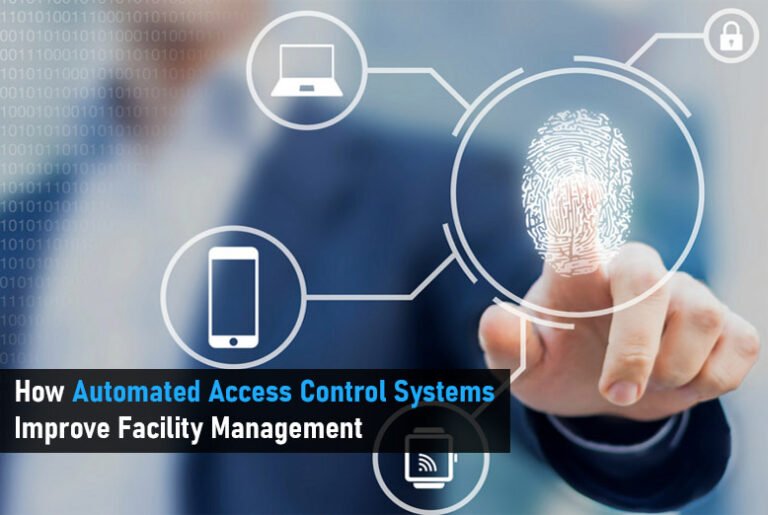Facility management involves a complex balance of security, efficiency, and operational flow, particularly in industries such as construction, mining, supermarkets, government, and roadworks. As demands for safety and streamlined operations grow, automated access control systems are proving to be an essential tool for improving facility management across these sectors. From securing perimeters to regulating traffic and ensuring authorised access, the technology surrounding access control continues to evolve.
Enhancing Security Through Automation
One of the most critical aspects of facility management is ensuring the security of people, equipment, and data. Automated access control systems offer a significant advantage in this regard. By replacing traditional locks and keys with digital entry methods, such as swipe cards, biometric scanners, and mobile credentials, companies can prevent unauthorised access more efficiently.
For instance, in the mining industry, where safety and security are paramount, automated systems can restrict access to hazardous areas and ensure that only personnel with the required training and certifications can enter specific zones. Similarly, construction sites benefit from automated control by monitoring and recording who enters and exits the site, ensuring compliance with safety regulations.
Beyond physical entry points, these systems can be integrated with CCTV and other security measures, providing real-time monitoring and alerts in the event of breaches. This comprehensive approach to security helps protect assets and reduces the risk of theft or unauthorised tampering.
Streamlining Operations and Traffic Control
Automated access control systems are not just about securing a site; they can also play a vital role in managing the flow of people and vehicles, particularly in busy environments like supermarkets, roadworks, and large construction projects. Gate motors and boom gates, for example, help regulate vehicle entry and exit, reducing congestion and improving safety for workers and visitors alike.
Traffic control products, such as automatic boom gates and security sensors, can be programmed to grant or restrict access based on time of day, vehicle type, or the user’s clearance level. This level of automation is invaluable for industries like roadworks and building management, where efficient traffic flow is crucial for maintaining both safety and productivity.
For supermarket chains and large facilities, automated systems also simplify the management of delivery schedules and employee access, ensuring that the right people have access to restricted areas such as stock rooms and warehouses without slowing down operations.
Improving Efficiency and Reducing Costs
Efficiency is key to managing any large facility, and automated access control systems offer significant cost-saving benefits. By automating the processes of granting access, facility managers reduce the need for manual oversight and eliminate the time-consuming task of issuing and tracking physical keys. This not only reduces labour costs but also minimises the risks associated with lost or stolen keys, which can lead to expensive lock replacements.
In sectors such as government and councils, automated systems allow for the seamless management of multiple sites from a single control centre. With digital access logs, facility managers can track movements across buildings and locations, providing valuable data that can be used to optimise operations and detect potential issues before they escalate.
Moreover, the energy-efficient designs of modern automated access control solutions contribute to lower energy consumption, aligning with sustainability goals that many companies, including those in construction and mining, are increasingly adopting. Integrated access control for smart buildings further enhances these benefits by synchronising with other systems to improve overall building management and operational efficiency.
Boosting Compliance and Accountability
In many industries, regulatory compliance is a significant concern. Automated access control systems help ensure that companies adhere to industry regulations by providing detailed logs of who enters and exits particular areas and when. This is especially relevant for construction and mining, where safety protocols are rigorously enforced.
By utilising technologies such as biometric authentication and time-stamped access records, companies can demonstrate compliance with safety and operational standards during audits. The accountability provided by these systems also reduces the risk of human error, which can lead to costly violations and accidents.
Supporting Future-Ready Facility Management
The integration of automated access control systems within facility management is not only about addressing current challenges but also preparing for the future. As businesses grow and evolve, so too must their security and operational infrastructure.
Industries such as building management and security are increasingly turning to scalable solutions that can adapt to changing needs. Modern systems are designed with future expansion in mind, allowing companies to integrate new technologies like artificial intelligence, cloud-based management, and Internet of Things (IoT) devices seamlessly.
For those seeking to enhance their facility management practices, investing in automated access control systems offers a sustainable path forward. These systems provide not only immediate improvements in security and operational efficiency but also position companies to capitalise on emerging technologies.
To explore how your business can benefit from these cutting-edge solutions, visit https://rotech.com.au/ and discover a range of access control products designed to meet the diverse needs of industries like construction, mining, supermarkets, and beyond.
Conclusion
Automated access control systems are revolutionising the way facilities are managed across various industries. By improving security, streamlining operations, reducing costs, and ensuring compliance, these systems offer a future-ready solution to the growing demands of modern facility management. As industries continue to evolve, the adoption of automated access control technologies will undoubtedly play a key role in maintaining the safety, efficiency, and sustainability of workplaces across Australia.
Also Read: Facility Management Trends to Watch in 2024



